One thing that is so sorely missing from photography in modern times is physical prints. Whilst it is possible to pop to the supermarket and offload photos from your phone or memory card, the quality of those prints are always disappointingly flat and have a nasty habit of fading or glueing themselves to picture frames after a while.
Considering digital photography has enabled us to take unimaginable quantities of pictures and share them instantly anywhere in the world, it strikes me that we actually see far fewer images as a result. Once you’ve scrolled past a picture, that’s usually it – gone to the archives. Digital photo frames are a great solution and certainly keep things interesting by rotating images, however they’re not exactly sustainable or practical if you wanted to cover a large area or use multiple frames.
Undoubtedly, then, there is a need and market still for physical photography and cameras that produce next to instant images. There’s nothing new here, the technology has existed for 75 years, but it doesn’t stop it being any less magical when a few seconds after pressing a shutter you have an image developing in your hands. It was time to try out some of the new instant format cameras.
In this review:
- The history of instant photos
- Buying into the modern systems
- Zink vs Ink
- The Kodak Printomatic
- The Fujifilm Instax 11
- Running costs and value for money
- Conclusion – Should you bother with instant prints?
The history of instant photos

Born in 1908, Edwin Land was something of a photography pioneer and arguably something of a genius. He was an incredibly inquisitive child who drove his family round the bend by taking almost everything they owned to pieces to find out how it worked.
As with all truly brilliant people of this particular era, he exhibited what could be vaguely described as “eccentric” behaviour. He wasn’t alone, John Von Neumann, a genius of such scale that arguably he had a bigger impact on society than Einstein (his Wikipedia page lists no fewer than 123 theories, discoveries or inventions in the fields of Mathematics, Computer Science and Physics) used to drive his car whilst reading a book because he didn’t believe in wasting his time concentrating on such trivial things as the road ahead. Land, on the other hand, would become so engrossed in his work that he would forget to eat or take breaks of any kind without reminders. There is a record of him once wearing the same clothes for 18 days in a row because he didn’t want to stop his research.
In 1947 he presented to the world something of a miracle when he demonstrated the “Land Camera” that could take a picture and produce a fully developed print in around a minute. Underestimating demand, he only produced 50, all of which promptly sold out on the first day.
The special film he had created contained a negative, a positive where the picture would finally be formed and all of the chemistry necessary to transfer the negative onto the positive. It was nothing short of a miracle in 1947.

Land set up the Polaroid company and by 1963 had developed the commonly recognised square format Polaroid colour prints most people will think of when they hear the name. Colour instant prints are not simple by any means and contain multiple layers all responsible for either developing a specific colour, blocking out light to prevent further exposure outside of the camera or removing an opaque layer so the final image is visible once fully formed.
On a really, really simple level the chemistry is along the lines of glow sticks. In those a small vial of hydrogen peroxide (hair bleach) is mixed into phenyl oxalate when the stick is bent, snapping the vial. The subsequent chemical reaction emits photons of light causing the stick to glow.
In a Polaroid, the necessary chemicals are stored in the base of the picture in the white border which is then activated by a set of rollers as the frame is ejected from the camera. Today, this technology is still in production thanks to the “impossible project” who bought the manufacturing machinery when Polaroid finally closed their doors in 2008.
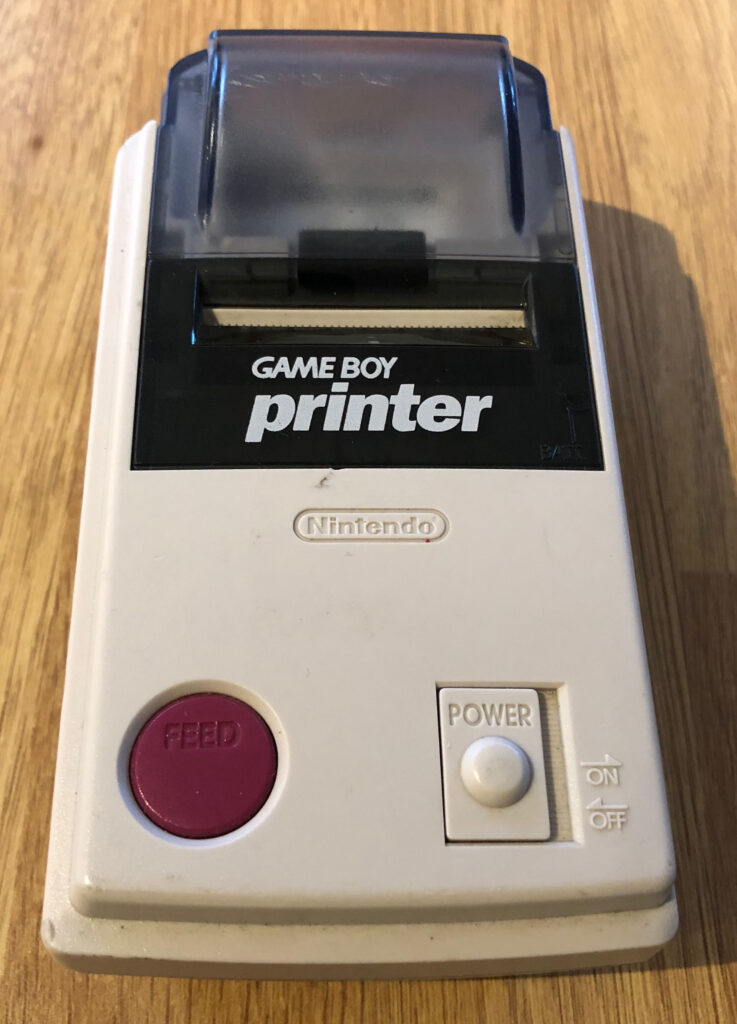
Since then, a number of other instant print technologies have appeared including the two used by Fujifilm and Kodak in their respective machines. Fuji based their film on the same technology as Polaroid, with some notable improvements meaning the camera itself could be much smaller, whereas Kodak use an entirely different process called “Zink” to effectively print an image using a thermal printer (the exact same idea as the printers used to produce receipts in supermarkets). Guess who invented Zink? That’d be Polaroid…
Both technologies have advantages and disadvantages as we’ll see.
Buying into the modern systems
Instant print photography has never been cheap or economical when compared to standard film. In 1983 a pack of 20 Polaroid 600 print film would set you back £10, that’s approximately £32 in todays money which works out at £1.60 per print! For context, at the same time a 36 exposure roll of Kodak film was £2.15 and a Polaroid camera £40 (£125 today, if you were wondering). Having young children discover your Polaroid camera in 1983 could easily induce a heart attack if you discovered them merrily shooting off pictures of the carpet or the cat.

Today things are relatively much cheaper, but still not exactly pocket money prices. As of December 2022 the general retail price of the Fujifilm Instax 11 is around £75 depending on retailer and colour. The Kodak Printomatic is £59.99 and neither camera come with any prints included which is something of a shame especially if you consider these are often given as gifts that will end up being disappointing when the recipient realises they need to shell out for some film before it will work.
A pack of 20 Zink sheets will set you back £13 (although 50 packs are far better value). Comparatively, 20 Instax shots will set you back £2 more at £14.99. This gives us a total system buy in price of £90 for an Instax and £73 for the Kodak. In simple terms, the Kodak complete with paper is the same price or cheaper than just the camera for the Fujifilm system.
If your purchasing decision is made on cost alone, then you can immediately stop reading and go and buy in to the Kodak system – no matter what happens you’ll always be getting more photographs for your money.
Second hand prices are not spectacular in terms of saving. A boxed Instax Mini 11 is currently averaging £60 on everyone’s favourite tat bazar, an unboxed version will set you back approximately £35-40 all in. The price of the Kodak confuses me, recent sold prices show they’re selling for pretty much exactly the same as new ones from Amazon. It always makes my brain hurt when people simply make the assumption that eBay must be cheaper, without actually checking that it really is. Unboxed, however, the Kodak can be had for £30 if you’re lucky.
Zink vs Ink
It would be all too simple if the difference between these two offerings was simply the price when new. However, they both make use of vastly different technology in order to produce the final image. To make things even easier, they both have quite specific advantages and disadvantages which make them hard to compare like for like.
Zink paper is undoubtedly cheaper, but moreover makes the whole camera slimmer. Once printed, providing the paper is kept away from intense sources of heat, Zink produces quite robust, long lasting prints that will last the test of time. Their quality, however, is directly affected by the resolution of the print head contained in the camera. As for the Printomatic, the print head can be described as “ok” but not spectacular. The second disadvantage of Zink is the vibrancy and richness of colour. Undoubtedly, Zink images are slightly flatter than their film counterparts.
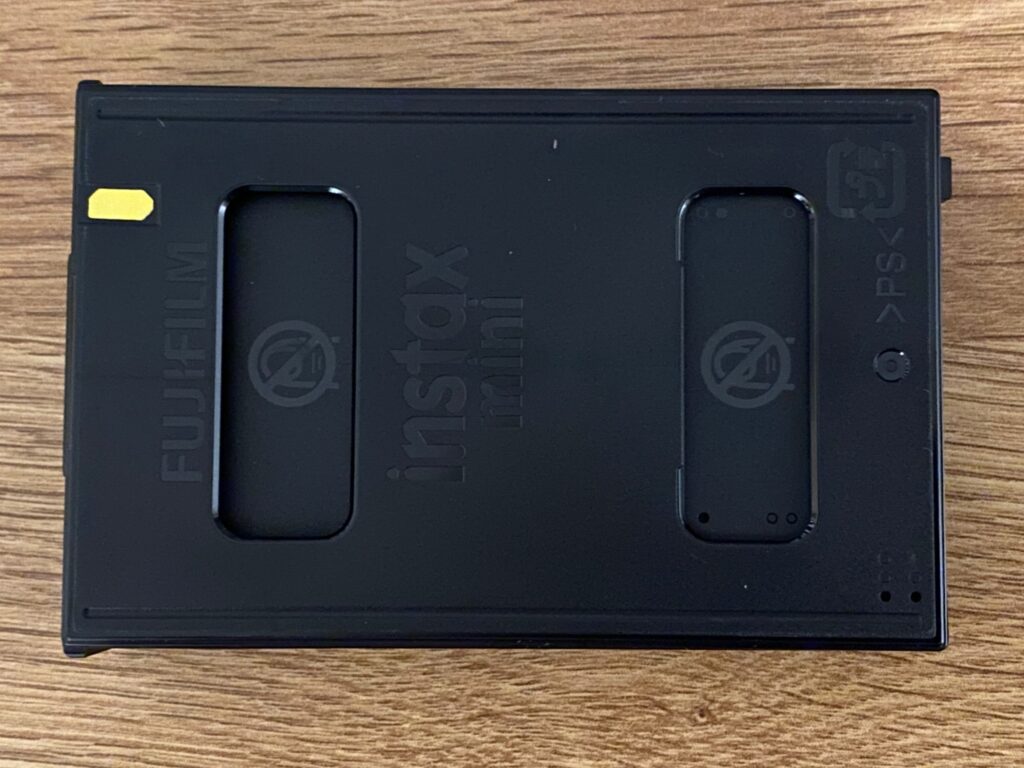
Fujifilm Instax film is much bulkier and produces more waste. As it is literally film, it is of course light sensitive. This means it comes packaged not only in a plastic wrapper, but also a plastic cartridge with disposable plastic cover to boot. If sustainability is on your radar, using the Instax range feels like a bad move in terms of the waste created.
In terms of end results, Instax gives you that magic moment of watching the final image emerge from a pure white piece of paper. As for how it looks, it reminded me of getting the prints back from the lab when I used to have a cheap compact 35mm camera as a child. It’s exactly the film look you’d expect because… well… it is film.
The Kodak Printomatic
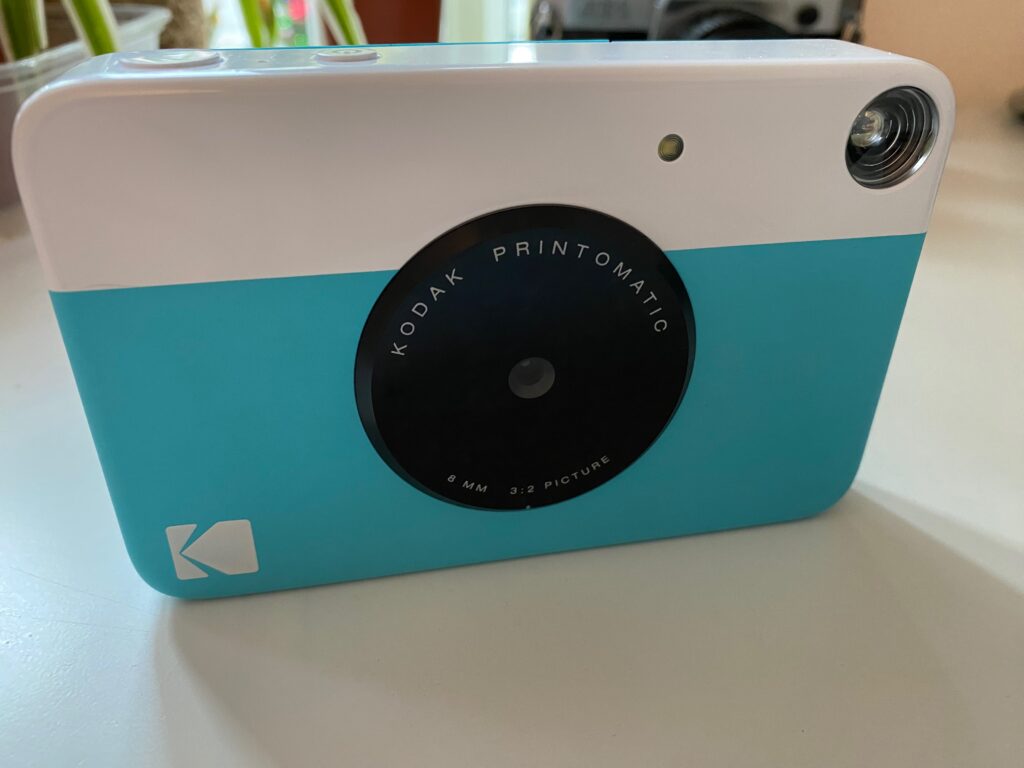
Both cameras are cheaply made and are plastic through and through. The Printomatic is, in my opinion, by far a better and more well thought out design than the Instax Mini. The body of the Kodak feels solid enough, the weight is reasonable and is perfectly pocketable. There is no way you can turn it on accidentally and start firing off shots in your pocket as the power button needs to be held down for a few seconds before it turns on, followed by then pressing the shutter.
If build quality and feel were everything, the Kodak would win hands down. It wins even more owing to the fact that you can insert a micro SD card and record a copy of each of your images. Handy if you really buy in to the system and have a stand alone Zink printer that would enable you to print copies of each image. It’s a nice touch even if it is probably little used in practise.

There are, though, two key flaws in the Printomatic and they really do ruin the experience of using it.
When taking an image, you press the shutter and assume (as you would) that the picture has been captured. This isn’t the case. The camera beeps to acknowledge the shutter has been pressed, but then after a delay of about 2 seconds, the camera beeps again to tell you the process is complete. If you move in this time frame and the light isn’t “the sun is literally directly shining into the lens” then you are almost guaranteed blurry or odd looking results.

There is nowhere in the manual that this is mentioned, so you’re not expecting it. Furthermore, any subject which moves at all is going to end up being just a streak across your print out. I tried to take a photo of the cat and just gave up after she kept trying to rub her face on the Printomatic rather than sit nicely for all of you to see.
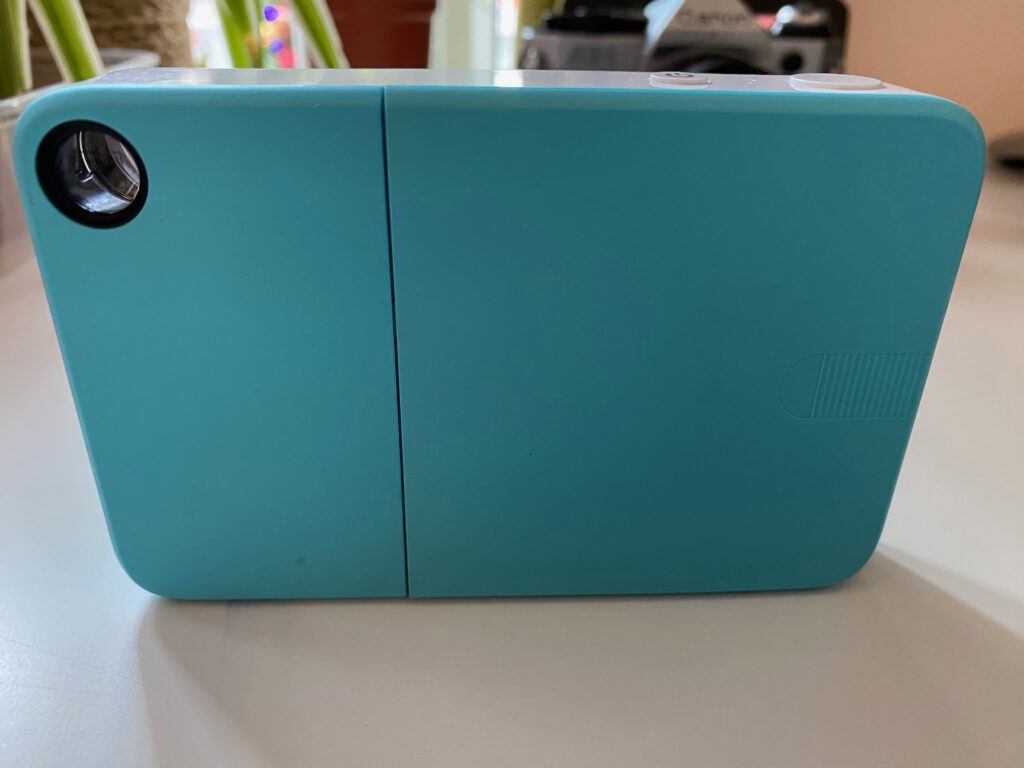
The second design flaw is in the paper compartment. The cover is held on by extremely small and thin plastic clips. These clips are prone to breaking and whilst not a problem in terms of needing to be light tight (it doesn’t) it does mean that the cover will keep falling off. I contacted Kodak about this and their customer service was “if you need warranty service take a photo of your receipt” which, to quote a phrase, is missing the point. They also won’t supply you spares – so that’s a zero score for sustainability and giving a damn about your after sales support. Nothing some Duct Tape won’t fix.
Finally, the viewfinder is terrible in terms of accuracy. Although it’s easy to use and relatively clear, especially compared to the pitiful Instax Mini, up close it suffers from a massive perspective shift. What you see isn’t what you get when printed out. The further you move from your subject the more accurate this becomes, but even at distance there is some difference between what you see in the frame and what finally emerges from the printer.
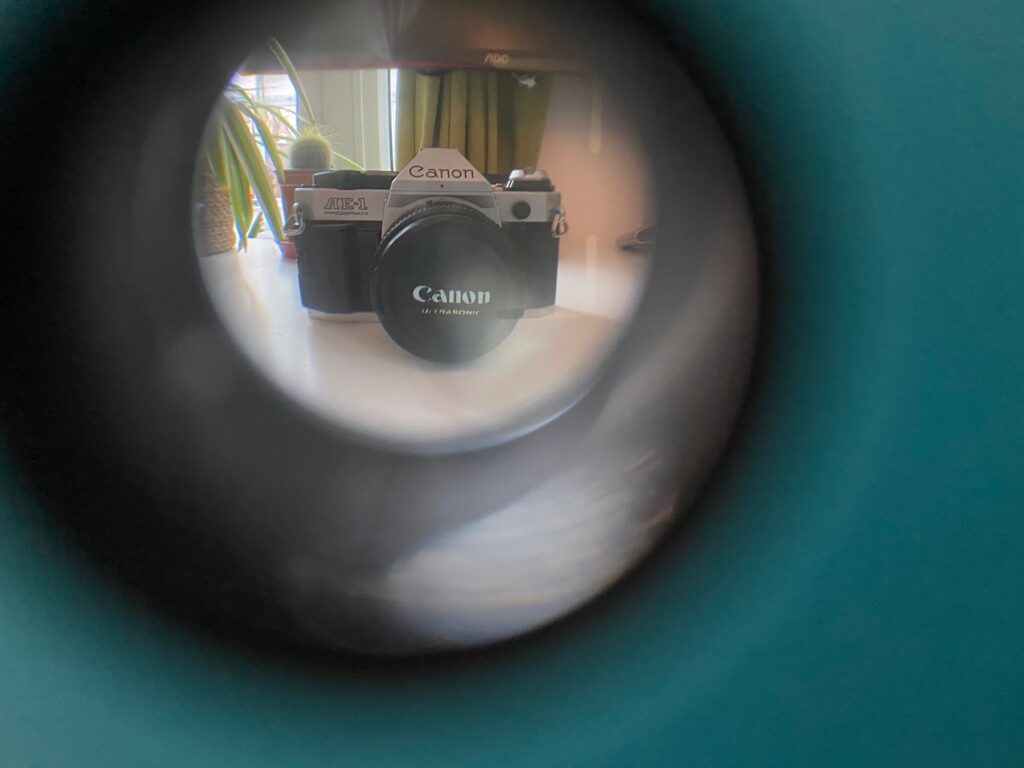
The camera absolutely cannot handle indoor or low light shots, this is strictly a daylight and outdoor camera unless you can hold it very, very still against something solid to get a usable print from indoors. I can’t tell how much the cheap plastic lens affects the quality of images, or whether the print head needs to be a higher resolution, but there is nothing sharp about the final images that come out of the camera.
On a positive note, it’s absurdly simple to use, my daughter absolutely loves the thing and for a child to use it is cheap and produces prints they can get their fingers all over and it won’t matter one bit. The Kodak paper is brilliant in that it has self adhesive backing meaning children can stick their creations to whatever they please – it really has been well thought out from this perspective. My daughter is completely sold by the concept and loves running around taking pictures and seeing the slightly disappointing results that pop out as if by magic.

The Fujifilm Instax 11
Let’s get to the point, for £79 this camera is appalling in terms of value for money and build quality. It feels cheap, it looks cheap, it behaves cheaply and is unnecessarily compromised. The plastic finish isn’t nice at all and the Instax does not scream robust in any way, I would certainly think twice before giving this to a younger person to use in preference to the Kodak. It’s little things that matter and the Instax has visible screws all over the place (the Kodak does not), the buttons feel soft and when the lens pops out you’ve got about a 25% chance of it having actually opened properly. It is, in short, cheap and nasty on first impressions.
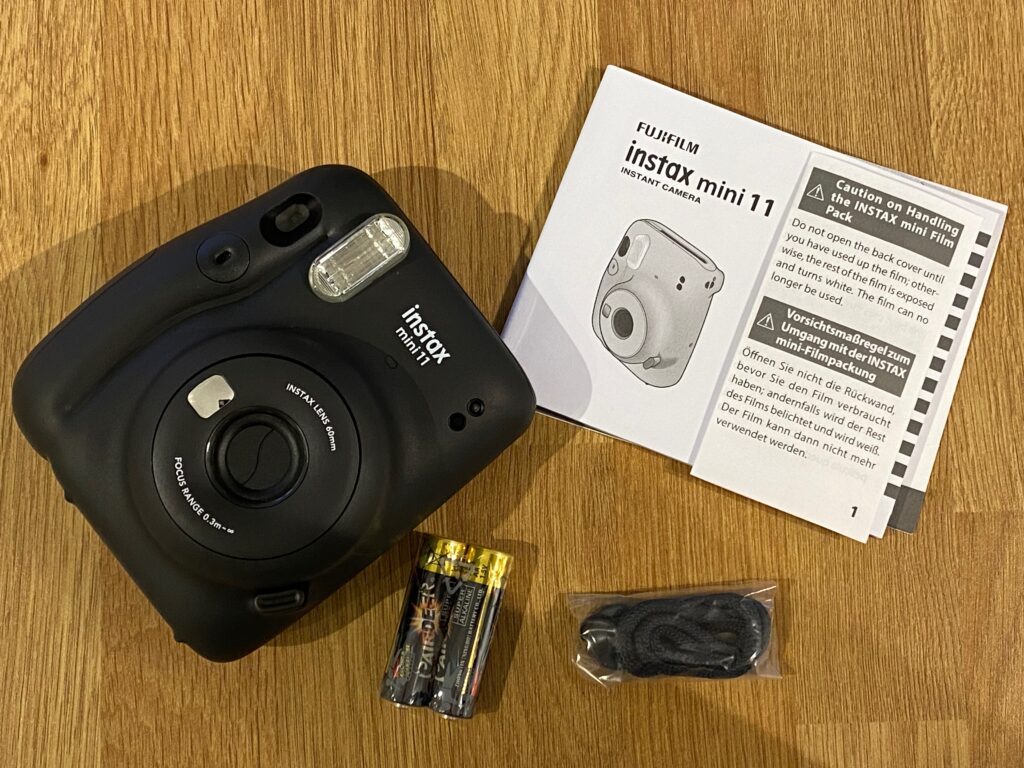
It doesn’t get any better from an ergonomics point of view. The camera, when placed on a surface in landscape orientation (the way you’d naturally put it down), just slumps forward onto the lens. Completely unnecessarily, the base has been rounded. You can put it down in portrait just fine, but this is a classic example of pointless form over useful function.
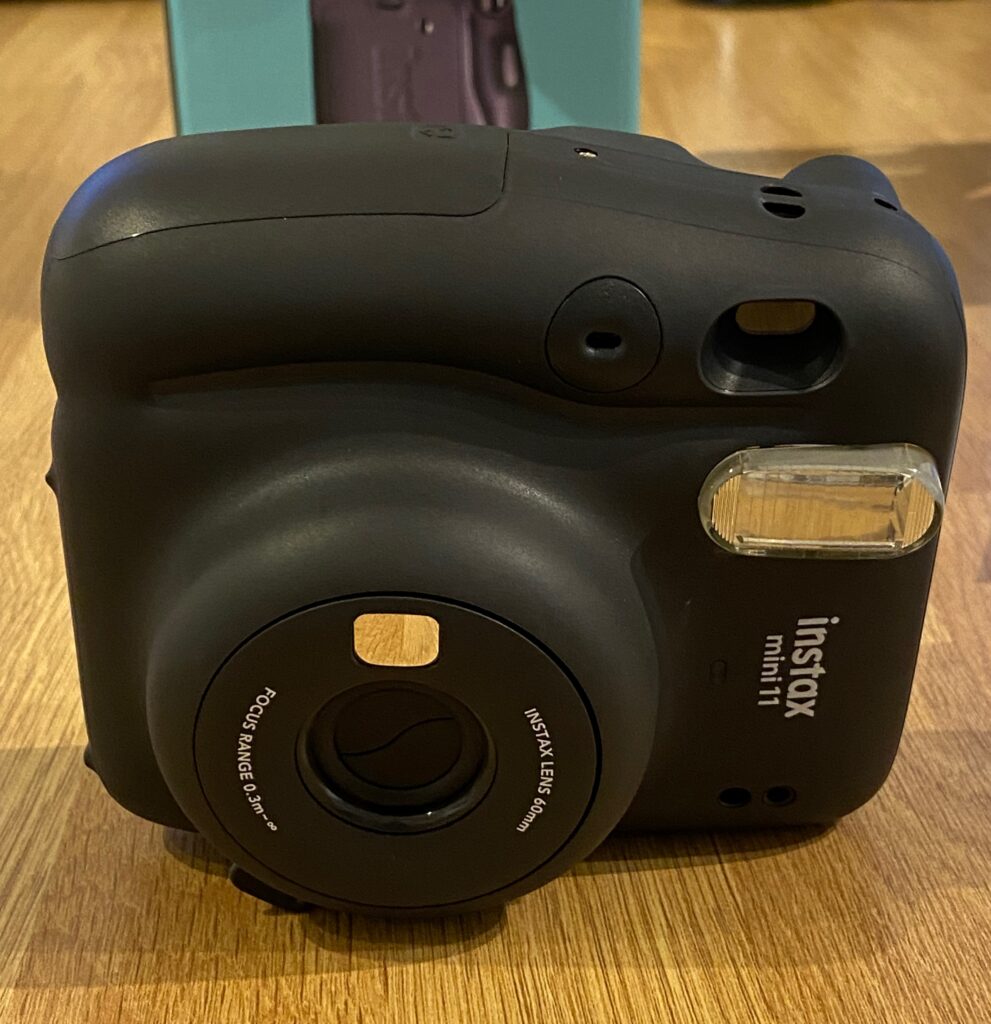
This is nothing compared to the utterly inexplicable placement of the shutter button. This, remember, is a camera. It’s sole purpose is to take images. Hence, the shutter button is the most important control on the whole machine. Only, Fujifilm’s designers decided it didn’t matter and stuck it just under the viewfinder on the front of the body. I’m trying to find words for how stupid this design is, but honestly, words have failed me.
The natural and obvious position for the shutter button is on top of the body but exactly in this place is the battery compartment cover. It just wouldn’t have been hard to design this differently and give some logic and ergonomics to the controls. Worse, the button is flush with the body meaning often enough you’ll keep shoving your finger over the viewfinder as you’re trying to find the button to take a shot.
Talking of the viewfinder, it is beyond a joke, and that’s if you can find it with your eye. It is so minute that time after time I would raise the camera to me eye only to find I’m seeing nothing at all until I shuffle it around carefully into the exact position where you can see down the eye of a needle. This again is such a poor design. The Kodak has a tiny body, but even that viewfinder is slightly bigger and easier to use. The Instax is huge, there is so much space here that a nice, big, bright viewfinder would’ve been trivial. These cameras need a viewfinder – it is vital for their use, but it feels like Fujifilm have forgotten this isn’t a digital body and just popped a tiny viewfinder in as an afterthought.
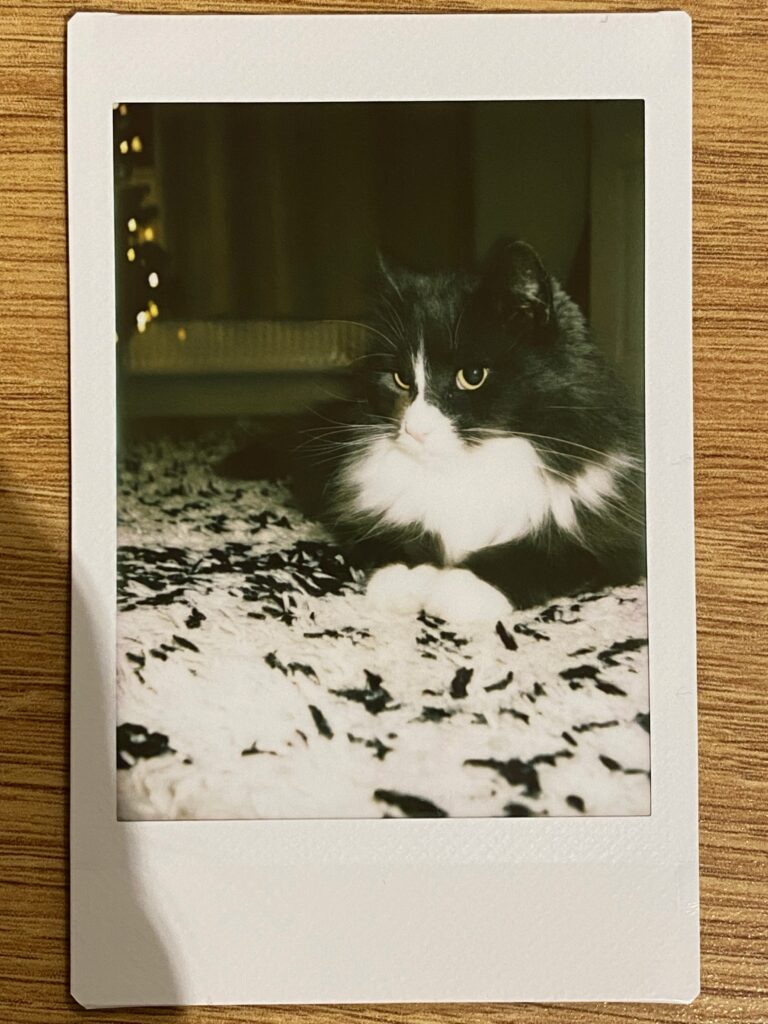
I can only conclude that the Instax is intended almost exclusively as a party selfie camera. All of the controls and features are geared towards having the camera facing towards you. It has a dedicated selfie mode – pull the lens for close focus, and a silver mirror which is ironically bigger, clearer and easier to use than the viewfinder. As someone who almost never feels the urge to turn the camera on myself, this really makes my brain hurt.
The lens is almost certainly higher quality and capable of letting in more light than the Printomatic, however it wobbles all over the shop when you pull it out and quite honestly I don’t know how long it will last when you have to pull it out manually every time for the selfie or close up mode. It takes a reasonable tug to get it to pop out and the whole time the lens assembly moves from side to side. Internally, the lens uses a bellows arrangement like an early 1920’s camera, cleverly hidden behind some plastic to look like a modern zoom lens. In short, I am not confident about the build quality or lifespan.
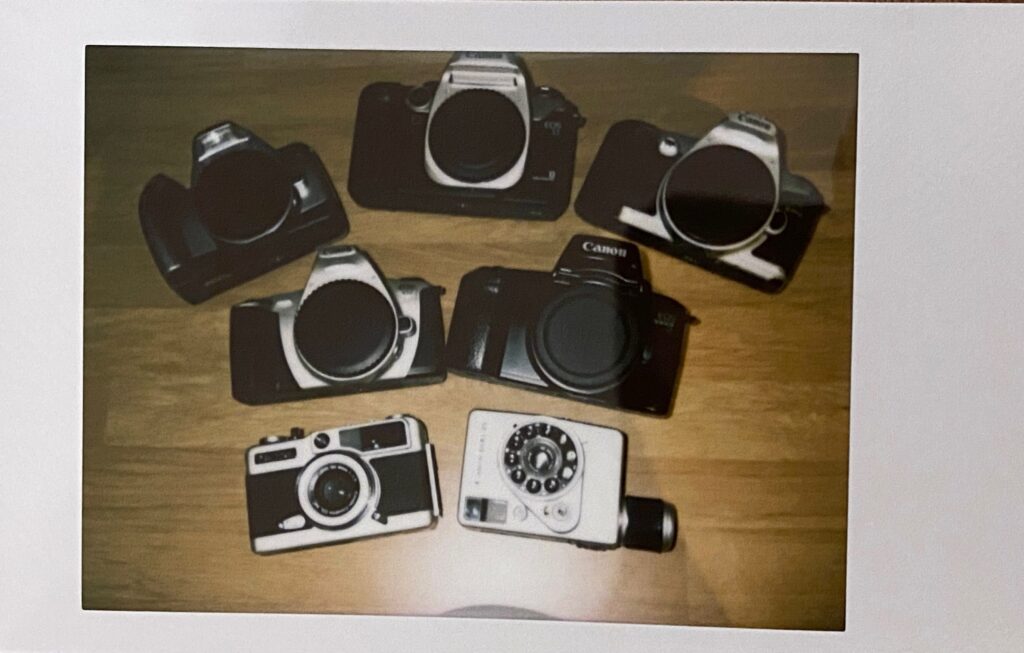
I read a few reviews of the Instax on “reputable” websites before I bought it just to get an idea of their perspective. I can honestly report that these people have either never experienced a half decent camera in their life, or they are absolutely afraid to tell the truth in case their supply of free technology to review suddenly dries up. One comedically described it as “a chunky plastic build that has been slimmed down but is still not *quite* pocket size.” Indeed, you would need pockets the size of a Sports Direct shopping bag to fit this in and “chunky” is apparently a synonym of “garbage.”
Why these cameras are constantly recommended is beyond me. For a few more minutes in the design stage they could’ve made something which was just so much more value for money. The full time flash is killer – why you cannot turn this off is inexplicable. They’re touting their updated electronics in this model. I’ve had a quick glance at some teardowns and it looks suspiciously like a software modification to me, the chip and light sensor are similar if not identical to the older models. Even so, with a few more lines of code they could easily have switched the flash off when light was sufficient. They chose not to and it just adds to the “pile ’em high” mentality that runs through this cameras DNA.
This is such as shame because Instax photographs are a joy, the magic of watching an image appear never grows old and the film itself is capable of producing incredible images with the right equipment. The full time flash and abysmal lens on the Mini 11 deliberately cripples the potential of the film for no reason other than cost saving and a desire to bump you up to the (far) more expensive models in the range.
Running costs and value for money
Going like for like with a 20 shot pack of Zink paper or Instax film, you are going to spend 65p every time you press the shutter on the Kodak and 75p per Instax Mini shot. Considering the extra packaging and engineering that goes in to making instax film, it’s quite surprising that Zink is still so comparatively expensive.
This is fairly on par for print prices in general these days. If you pop down Tesco you’re looking at around 50p a print (admittedly for 6×4). Through a bulk printer like Photobox you can get as low as 11p per print depending on the volume you’re producing. Although these prices seem much cheaper, you have to factor in the fact that Zink and Instax are effectively film and print all in one. A roll of colour film today is £9 if you’re lucky for 36 exposures working out at 25p per shot, so £2.50 for the equivalent 10 shots on an Instax cartridge. If you add the 25p per frame film cost to the print costs they work out roughly in the same ballpark.
Quite obviously on a pure penny for penny comparison, Zink wins hands down. Having said that, Instax film is clearly worth the extra 10p a shot in terms of image quality. There’s no escaping the fact that Zink prints look like something out of a 1997 HP inkjet whereas Instax prints look just as you’d expect a normal photographic print out of a cheap camera to look.
Conclusion – Should you bother with instant prints?
In short, yes, but not with an Instax Mini 11 and probably not with the Kodak either.
The Instax is so unforgivably bad, the build quality so utterly awful that it makes disposable cameras look rugged and well built. Having shot off a 10 pack of film I promptly packaged it carefully back up and sent it back to Amazon. The lack of any thought in the ergonomics and design is just beyond comprehension, yet they are praised to high heaven by paid reviews or, worse, those “top 10” lists that are just scraped together to fill space and attract a few clicks.
Taking the time to use the Instax just exposes the inherent weaknesses all too much. Having spent £75 ish on a new one I felt let down from the second it came out of the box. There is no special technology in the camera itself, nothing which justifies the awful cost cutting, poor parts choices and unacceptable quality as shown in the lens when it refuses to pop out properly or open the lens cover reliably. Instax film has so much potential, so much to offer, but I cannot help but think many people will pick up the Mini 11, use it once and then return it to a cupboard never to be seen again.
For £75 you can pick up some absolute monsters of cameras on eBay or even through resellers such as London Camera Exchange. If you were ever trying to advocate film and the analogue process then for goodness sake point someone to a real 35mm camera and not this.
As for the Zink concept, it’s really good but a lot gets lost in translation from the image taken to the final print. For younger people and children it’s a wonderful, tactile introduction to photography in a format where they can have complete control over the process from shutter press to final image in their hands. The adhesive prints are genius in this respect. Kodak certainly put more effort into the design of the Printomatic and whilst yes, it is cheap, it is more robust and practical than the Instax can ever hope to be.
The Printomatic is far from perfect and the paper compartment door design flaw really lets down what otherwise would be an easy recommendation. The print quality doesn’t match Instax film, but everything else about the whole package and experience outshines the Fujifilm camera.
If you’re hell bent on instant prints and want value for money, buy a Printomatic but be aware of its limitations. I’m going to keep an eye out for the more expensive Kodak Smile which allegedly has a higher resolution printer. You may wish to read my review of the more expensive, but definitely better made Canon Zoemini 2 to see if that is more suitable for your needs. Zink printers are great fun with the kids, they really are, but for Gods sake, don’t buy an Instax Mini 11.
Share this post:

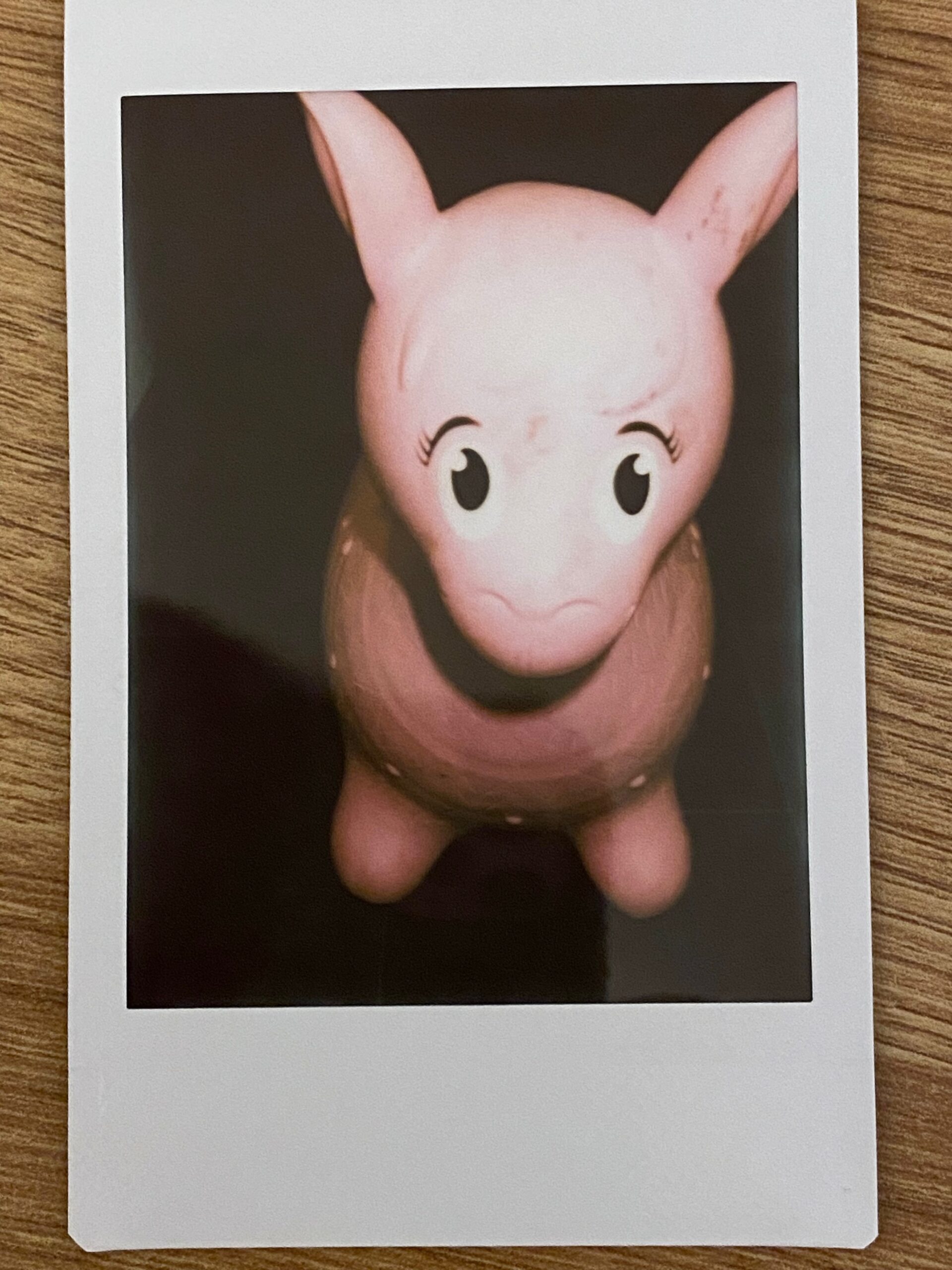


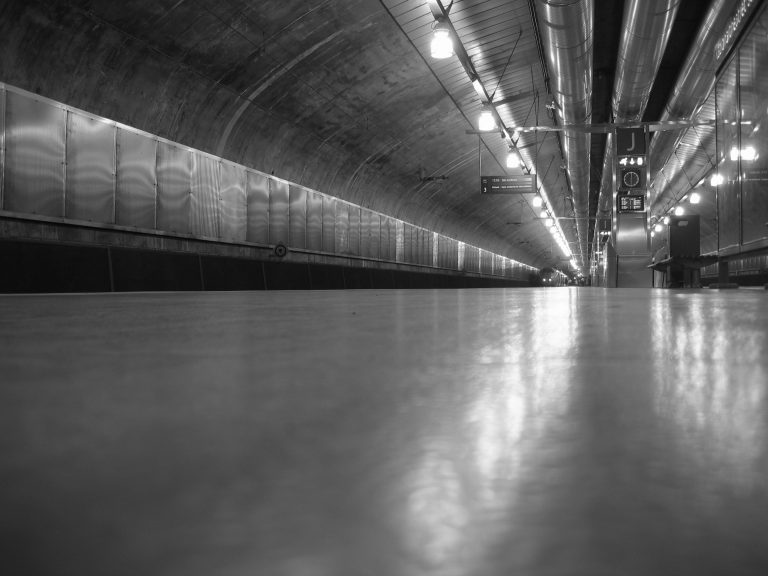
Hi, this review was really helpful. Thanks a lot!
As an owner of an instax mini 11, I disagree. I love my camera a lot! Before I bought my mini 11 I had tried the mini 9. I was very pleased, but what I didn’t like is that you had to manually choose the right setting for the right exposure or the result would not end up great. They changed this on the mini 11, so this setting is automatic. I’m very satisfied with this product and I get lovely pictures with beautiful colors. And I almost never take any selfies, because that’s not my intensions for buying this camera. Taking pictures of landscapes outside on a sunny day is amazing too! I love the results I get everytime and I can’t express myself enough how satisfied I am with the beautiful colors I get with this camera.
Whilst I’m sure many people are happy with the Instax, it is not a quality camera in any way. The points made here are valid – it is cheaply made, the lens is poor quality and prone to breakage, the full time flash is absurd. Why do you need flash on a sunny day for your landscapes? It is landfill design, I’m afraid, and a company with the heritage and design ability of Fuji should be ashamed for putting out such a sub standard product when actually a few minor tweaks could’ve made it so much better, it is a gimmick and they know it, which is why they offer much more expensive instax cameras to cater for people who’d like to use it in a remotely serious way. I’m glad you love yours, though!
I am in full agreement to what you have said about the instax 11, if you want a decent instant camera you need to spend £100 plus on one of Fuji Instax more well thought out instant cameras or a Polaroid. I too bought an Instax 11 and sent it back, as it felt like it would not last long.
Hello! I appreciate this review, very throrough and you obviously spent time with the cameras.
I have a 4 & 6 year old in mind, and dangerously thinking of giving them one each (as opposed to the same camera).
The mini is since updated, but it’s beyond helpful that you’ve compared my top two choices.
You’ve done good work here, so I wanted to say thanks and I’ll be remembering the ravioli when I have questions in the future